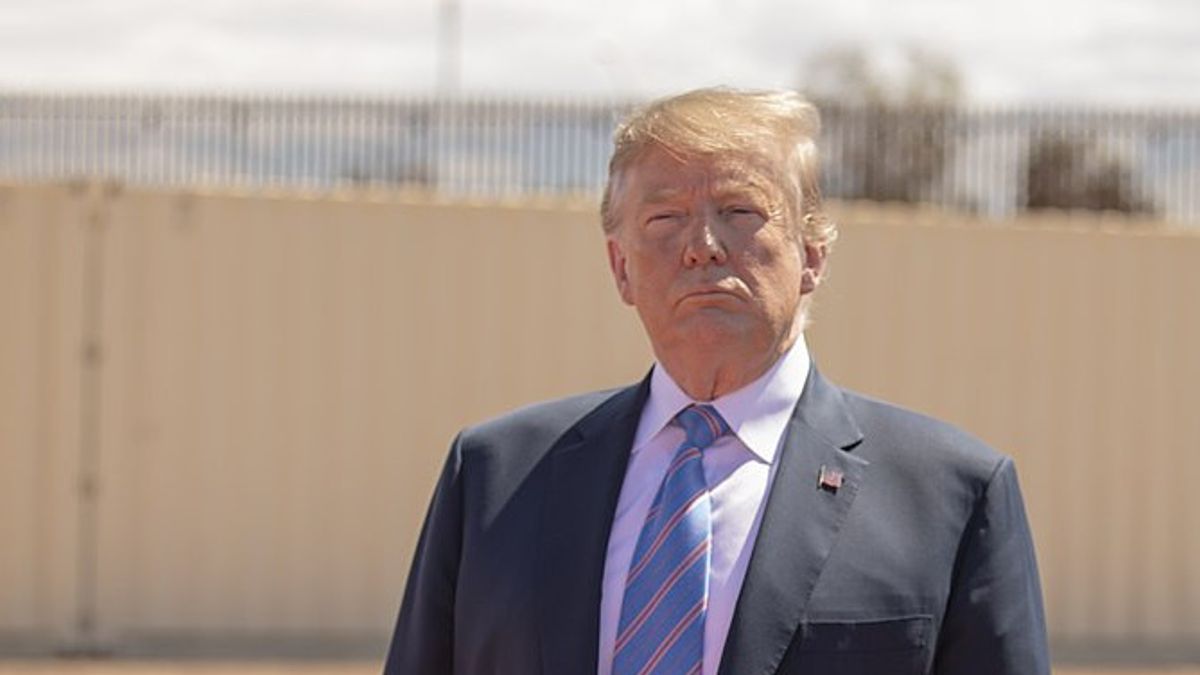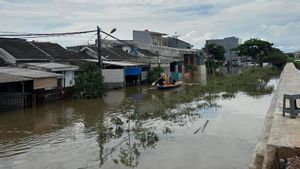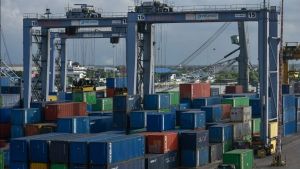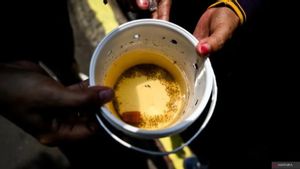JAKARTA - "We are going to build a wall" is a jargon that Donald Trump often used when campaigning before being elected President of the United States. He promised to build 450 miles of new walls on the US and Mexican border. This has become one of the most controversial policies of his reign. Even though Trump is not the first to initiate such a border development policy.
Trump is not playing games with his campaign promises. He built the wall along with the infrastructure for bollards, roads, perimeter lighting, law enforcement cameras and other technology. Even in the midst of a pandemic, projects are continuing at an increasing pace. According to Customs and Border Protection, 400 miles of the border wall have been completed so far, with a physical barrier 18-30 feet high.
According to The Guardian's report, the construction of the wall or guardrail was mostly carried out on public land, often protected land. But the Department of Homeland Security has broad powers to override environmental protection laws, such as the Endangered Species Act. But what we need to know, Trump is not the first US President to build a wall between the US and Mexico.
The construction of the parapet was first started in the mid-1800s, to be precise in 1845. At that time, construction reached the territory of Texas, Mexico's surrender of California and most of Arizona and New Mexico at the end of the Mexico-US war in 1848.
The 1853 Gadsden purchase also pushed the Arizona and New Mexico border further south where it is currently located. The 1848 Treaty on Guadalupe also established the Rio Grande as an official international border. The wall construction continued until the 1990s.
In fact, in 1996, US President Bill Clinton signed the Illegal Immigration Responsibilities and Reform Act. The law increases fines for illegal entry and allows for more funding for patrols and wall building.
In addition, the policy of building a guardrail was carried out in the administration of President George W. Bush. He increased US security in the aftermath of the plane crash in the Twin Towers on September 11.
Quoting The Washington Post, in 2006 President Bush signed the Secure Fences Act, promising a 700-mile guardrail on the Mexico-US border coupled with the construction of a wall across the entire 2,000-mile border. The decision was approved by 80 senators including Hillary Clinton, Barack Obama and Charles E. Schumer.
Campaign promiseTrump has made reducing illegal immigration a top priority for his administration. This has also become an important part of his campaign for the 2020 presidential election.
Citing the BBC, the latest figures show the number of migrants arrested on the southern border this year doubled between 2018 and 2019. In particular, the number of children and those traveling in family groups arrested at the border dropped significantly in the 12 months to October , compared to the previous year.
However, the size of this decline in numbers is a new obstacle. Immigration experts say the decline is likely the result of the deterrent effect of all the anti-immigration measures introduced by the Trump administration.
Those who fled their home countries found asylum rules tightened, were forced to wait in camps for long periods of time, and faced new limits on the number of refugees accepted in the US. The government has also adopted emergency procedures during the COVID-19 pandemic to allow migrants who cross the border to drive back to Mexico.
"Whatever effect a physical wall has on reducing irregular migration is insignificant compared to a bureaucratic wall of government," said Sarah Pierce, US immigration policy analyst at the independent Migration Policy Institute.
Trump's excuseAdditionally, Trump has claimed in the past that 90 percent of the heroin in the US comes from the southern border and that the wall will help fight drugs. But strengthening and expanding border barriers is unlikely to do much to reduce illicit drugs such as heroin, cocaine and methamphetamine. This is because most come through border checkpoints known as ports of entry.
While the majority of heroin in the US does originate from Mexico, the Drug Enforcement Administration says most of the heroin is hidden in privately owned vehicles or transport trucks, mixed with other goods and smuggled through official entry points.
The number of drugs - not including marijuana - seized at the southern border also shows most of these come through official entrances. Suppliers of illegal drugs are desperate to pass through official entrances due to walls and guardrails. Because they are determined to pass through official border gates, they are at high risk of being detected, intercepted and detained.
The construction of the Mexico-US barrier is indeed controversial. Even if it continues for decades, the construction will be hampered because it costs a lot of money.
The English, Chinese, Japanese, Arabic, and French versions are automatically generated by the AI. So there may still be inaccuracies in translating, please always see Indonesian as our main language. (system supported by DigitalSiber.id)













